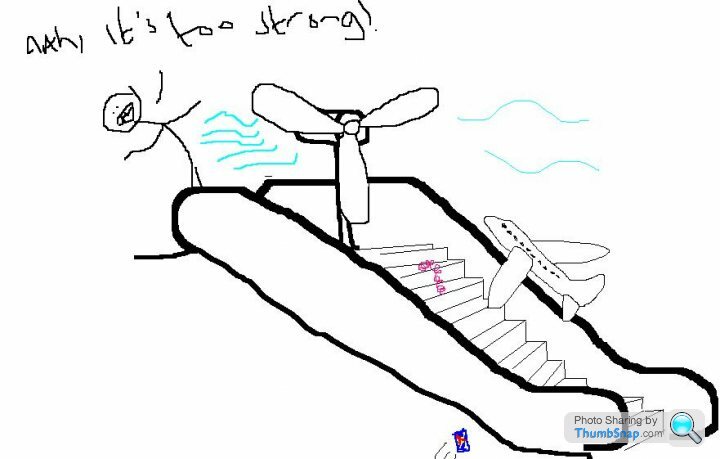A question about fans
Discussion
Last time I posted a question here it was about a slinky on an elevator that became about a plane on conveyor belt, hopefully this goes better.
Why is it if you turn on a fan on a hot day and stand up in front of it the air moving over your skin carries away moisture which cools you. However if you stand an equal distance behind the fan it becomes apparent that air is not being accelerated as much, if at all, behind the blades. Yet by definition the fan is running at a steady state where the volume of air entering the fan must equal that going out, there isn’t air accumulating. So why is it the column of air exiting the fan appears to be accelerated to a much higher velocity than that entering the fan to fill the vacuum left by the fan blades?
Why is it if you turn on a fan on a hot day and stand up in front of it the air moving over your skin carries away moisture which cools you. However if you stand an equal distance behind the fan it becomes apparent that air is not being accelerated as much, if at all, behind the blades. Yet by definition the fan is running at a steady state where the volume of air entering the fan must equal that going out, there isn’t air accumulating. So why is it the column of air exiting the fan appears to be accelerated to a much higher velocity than that entering the fan to fill the vacuum left by the fan blades?
You're right that volume in and out must be conserved - the reason you don't feel much behind the fan is that the column of air being spat out is quite narrow, but the air being drawn in is a wide cone - so since volume going in per second is the product of the area of air and its speed, the speed of the air going can be lower. I'm sure someone can explain it better than that though.
paranoid airbag said:
You're right that volume in and out must be conserved - the reason you don't feel much behind the fan is that the column of air being spat out is quite narrow, but the air being drawn in is a wide cone - so since volume going in per second is the product of the area of air and its speed, the speed of the air going can be lower. I'm sure someone can explain it better than that though.
This essentiallyThe air behind the fan is effectively, or can be assumed to be, a very very large reservoir. As such its velocity can be roughly = 0
Think of it like a Dam. With a finger sized hole.
On the one side of the Dam you are going to see a very powerful looking jet of water. On the other side you aren't going to have any idea that theres a leak! Its just conservation of mass, mass flow = density x flow area x flow speed.
On one side of the fan the area is very large, on the other side of the fan the area is much narrower. To conserve mass, if the area goes down the flow rate must go up.
Momentum.
The low pressure area upstream of the fan creates a force that acts equally on all the air distributed around the fan inducer diameter. This results in air being accelerated towards the fan from all angles, and as such the mean velocity is lower.
However, on the downstream side, the air is travelling much more linearly, because a "stream" of it has been accelerated through the fan blades. This air has momentum, so effectively this stream cuts and tumbles straight through the broadly stationary air downstream of the fan. At some distance away from the fan the mean velocity is once again zero, as that stream of air has given up all its energy to the surrounding static air (as it collides/mixes with said static air)
The low pressure area upstream of the fan creates a force that acts equally on all the air distributed around the fan inducer diameter. This results in air being accelerated towards the fan from all angles, and as such the mean velocity is lower.
However, on the downstream side, the air is travelling much more linearly, because a "stream" of it has been accelerated through the fan blades. This air has momentum, so effectively this stream cuts and tumbles straight through the broadly stationary air downstream of the fan. At some distance away from the fan the mean velocity is once again zero, as that stream of air has given up all its energy to the surrounding static air (as it collides/mixes with said static air)
Gassing Station | Science! | Top of Page | What's New | My Stuff





